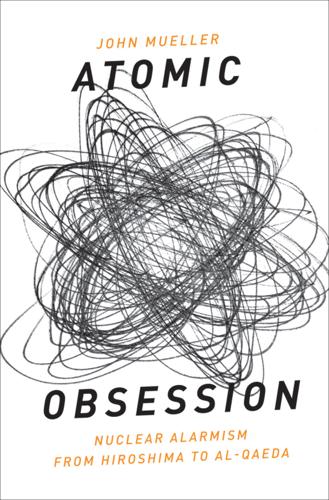
Atomic Obsession: Nuclear Alarmism From Hiroshima to Al-Qaeda
by
John Mueller
Published 1 Nov 2009
Former Secretary of State Brent Scowcroft was on very much the same alarmist wavelength when he assured us in 2008 that if Iran were allowed to enrich uranium, potentially on the way to a bomb, “that starts a wave of proliferation, both in the region—Egypt, Saudi Arabia, Turkey—and elsewhere in the world where you could have 20 or 30 countries close to nuclear weapons.”11 In similar vein, William Langewiesche has concluded that we have passed “the point of no return” on weapons proliferation to established states. That is, the nuclear genie is out of the bottle, and any state, even quite poor ones (North Korea is a pertinent case in point), can eventually obtain nuclear weapons if they really want to make the effort.
…
And others—Brazil, Argentina, South Korea, Sweden, Libya, and Taiwan—have backed away from or reversed nuclear weapons programs or perspectives, while South Africa, Ukraine, Belarus, and Kazakhstan have actually surrendered or dismantled an existing nuclear arsenal.6 Some of this, as will be discussed in the next chapter, is no doubt due to the hostility—and bribery—of the nuclear nations, but even without that, the Canadian case seems to have had wide and general relevance. William Langewiesche may be right that quite a few states—even quite a few poor ones now—do possess the technical and economic capacity to obtain nuclear weapons, but experience certainly doesn’t suggest that that capacity alone is remotely enough to encourage them to take the plunge.7 For potential nuclear aspirants, there are quite a few other considerations.
…
Some observers have insisted that it would be “easy” for terrorists to assemble a crude bomb if they could get enough fissile material, and one popular article even declared the task to be “child’s play.” But there are those who beg to differ. Atomic scientists, perhaps laboring under the concern, in the words of investigative journalist William Langewiesche, that “a declaration of safety can at any time be proved spectacularly wrong,” have been comparatively restrained in cataloguing the difficulties terrorists would face in constructing a bomb. However, physicists Wirz and Egger have published a paper that does so, and it bluntly concludes that the task “could hardly be accomplished by a subnational group.”
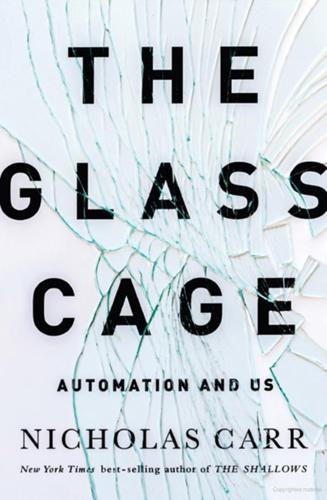
The Glass Cage: Automation and Us
by
Nicholas Carr
Published 28 Sep 2014
Engineers at NASA’s Langley Research Center had pioneered, more than ten years earlier, the use of CRT screens for transmitting flight information, and jet makers had begun installing the screens in passenger planes in the late 1970s.10 What really set the A320 apart—and made it, in the words of the American writer and pilot William Langewiesche, “the most audacious civil airplane since the Wright brothers’ Flyer”11—was its digital fly-by-wire system. Before the A320 arrived, commercial planes still operated mechanically. Their fuselages and wing cavities were rigged with cables, pulleys, and gears, along with a miniature waterworks of hydraulic pipes, pumps, and valves.
…
The Air France crash, Chesley Sullenberger has said, would have been “much less likely to happen” if the pilots had been flying in a Boeing cockpit with its human-centered controls.32 Even Bernard Ziegler, the brilliant and proud French engineer who served as Airbus’s top designer until his retirement in 1997, recently expressed misgivings about his company’s design philosophy. “Sometimes I wonder if we made an airplane that is too easy to fly,” he said to William Langewiesche, the writer, during an interview in Toulouse, where Airbus has its headquarters. “Because in a difficult airplane the crews may stay more alert.” He went on to suggest that Airbus “should have built a kicker into the pilots’ seats.” 33 He may have been joking, but his comment jibes with what human-factors researchers have learned about the maintenance of human skills and attentiveness.
…
Gillespie, “We Flew the Atlantic ‘No Hands,’ ” Popular Science, December 1947. 9.Anonymous, “Automatic Control,” Flight, October 9, 1947. 10.For a thorough account of NASA’s work, see Lane E. Wallace, Airborne Trailblazer: Two Decades with NASA Langley’s 737 Flying Laboratory (Washington, D.C.: NASA History Office, 1994). 11.William Langewiesche, Fly by Wire: The Geese, the Glide, the “Miracle” on the Hudson (New York: Farrar, Straus & Giroux, 2009), 103. 12.Antoine de Saint-Exupéry, Wind, Sand and Stars (New York: Reynal & Hitchcock, 1939), 20. 13.Don Harris, Human Performance on the Flight Deck (Surrey, U.K.: Ashgate, 2011), 221. 14.
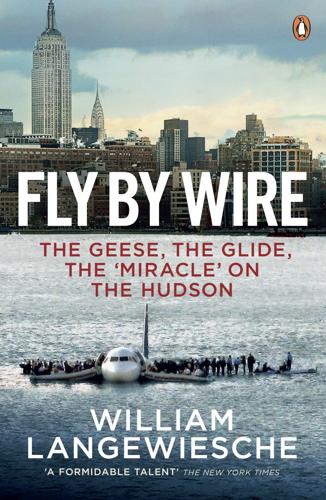
Fly by Wire: The Geese, the Glide, the Miracle on the Hudson
by
William Langewiesche
Published 10 Nov 2009
ALSO BY WILLIAM LANGEWIESCHE Cutting for Sign Sahara Unveiled Aloft American Ground The Outlaw Sea The Atomic Bazaar FLY BY WIRE The Geese, The Glide, The ‘Miracle’ on the Hudson WILLIAM LANGEWIESCHE PENGUIN BOOKS PENGUIN BOOKS Published by the Penguin Group Penguin Books Ltd, 80 Strand, London WC2R 0RL, England Penguin Group (USA) Inc., 375 Hudson Street, New York, New York 10014, USA Penguin Group (Canada), 90 Eglinton Avenue East, Suite 700, Toronto, Ontario, Canada M4P 2Y3 (a division of Pearson Penguin Canada Inc.) Penguin Ireland, 25 St Stephen’s Green, Dublin 2, Ireland (a division of Penguin Books Ltd) Penguin Group (Australia), 250 Camberwell Road, Camberwell, Victoria 3124, Australia (a division of Pearson Australia Group Pty Ltd) Penguin Books India Pvt Ltd, 11 Community Centre, Panchsheel Park, New Delhi – 110 017, India Penguin Group (NZ), 67 Apollo Drive, Rosedale, North Shore 0632, New Zealand (a division of Pearson New Zealand Ltd) Penguin Books (South Africa) (Pty) Ltd, 24 Sturdee Avenue, Rosebank, Johannesburg 2196, South Africa Penguin Books Ltd, Registered Offices: 80 Strand, London WC2R 0RL, England www.penguin.com First published in the United States by Farrar, Straus and Giroux 2009 Published in Penguin Books 2010 Copyright © William Langwiesche, 2009 All rights reserved The moral right of the author has been asserted Portions of this book were previously published in Vanity Fair Except in the United States of America, this book is sold subject to the condition that it shall not, by way of trade or otherwise, be lent, re-sold, hired out, or otherwise circulated without the publisher’s prior consent in any form of binding or cover other than that in which it is published and without a similar condition including this condition being imposed on the subsequent purchaser ISBN: 978-1-84-614308-3 This is the second book I dedicate to Cullen Murphy, my editor and friend.
…
PENGUIN BOOKS FLY BY WIRE William Langewiesche is an author and journalist. He is currently Vanity Fair’s international correspondent, having made his name writing for Atlantic Monthly. His strong, evocative prose is used to devastating effect on a range of issues. Before embarking on a writing career he worked as a pilot for fifteen years from the age of eighteen. He has been termed one of the leading writers of The New New Journalism, a group of writers who have secured a place at the centre of contemporary American literature, as Tom Wolfe and The New Journalism did in the sixties. ALSO BY WILLIAM LANGEWIESCHE Cutting for Sign Sahara Unveiled Aloft American Ground The Outlaw Sea The Atomic Bazaar FLY BY WIRE The Geese, The Glide, The ‘Miracle’ on the Hudson WILLIAM LANGEWIESCHE PENGUIN BOOKS PENGUIN BOOKS Published by the Penguin Group Penguin Books Ltd, 80 Strand, London WC2R 0RL, England Penguin Group (USA) Inc., 375 Hudson Street, New York, New York 10014, USA Penguin Group (Canada), 90 Eglinton Avenue East, Suite 700, Toronto, Ontario, Canada M4P 2Y3 (a division of Pearson Penguin Canada Inc.)

Messy: The Power of Disorder to Transform Our Lives
by
Tim Harford
Published 3 Oct 2016
Jeff Wise, “What Really Happened Aboard Air France 447,” Popular Mechanics, December 6, 2011, http://www.popularmechanics.com/flight/a3115/what-really-happened-aboard-air-france-447-6611877/; William Langewiesche, “The Human Factor,” Vanity Fair, October 2014, http://www.vanityfair.com/news/business/2014/10/air-france-flight-447-crash; “Air France Flight 447 and the Safety Paradox of Automated Cockpits,” Slate, June 25, 2015; “Children of the Magenta,” 99% Invisible (podcast), June 23, 2015, http://99percentinvisible.org/episode/children-of-the-magenta-automation-paradox-pt-1/. 2. William Langewiesche, speaking on “Children of the Magenta,” 99% Invisible (podcast), http://99percentinvisible.org/episode/children-of-the-magenta-automation-paradox-pt-1/. 3.
…
And of the tiny number of hours spent manually flying the plane, few if any would have been spent in the degraded fly-by-wire mode, and almost all would have been spent taking off or landing. No wonder Bonin instinctively moved the plane as if for an aborted landing. And no wonder he felt so helpless at the plane’s controls. • • • The Air France pilots “were hideously incompetent,” says William Langewiesche, a writer and professional pilot.2 And Langewiesche thought he knew why. He argued persuasively in the pages of Vanity Fair that the pilots simply weren’t used to flying their own plane’s at altitude without the help of the computer. Even the experienced Captain Dubois was rusty: of the 346 hours he had been at the controls of a plane during the past six months, only four were in manual control rather than overseeing the autopilot, and even then he’d had the help of the full fly-by-wire system.
…
On creative prodigies: Paul Hoffman and Ed Yong. On architecture: Warren Berger, Stewart Brand, Alain de Botton, and Jonah Lehrer. On Martin Luther King, Jr.: Taylor Branch, David Garrow, and Stephen Oates. On Bezos, Rommel, and Stirling: Virginia Cowles, David Fraser, and Brad Stone. On Flight 447: William Langewiesche, Jeff Wise, and the staff of 99% Invisible. On Hans Monderman: Tom Vanderbilt. On being human: Dan Ariely, Brian Christian, Hanna Rosin, and Muzafer Sherif. On the microbiome: Emily Eakin. On mess: Eric Abrahamson, David Freedman, Jane Jacobs, and James C. Scott. Thank you to my excellent agents and editors, Sally Holloway, Iain Hunt, Jake Morrissey, Zoë Pagnamenta, and Tim Whiting, and to everyone at all of my publishers and agents around the world.
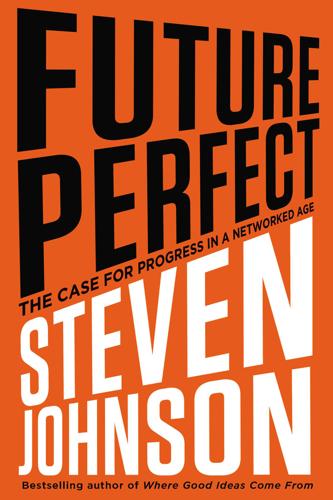
Future Perfect: The Case for Progress in a Networked Age
by
Steven Johnson
Published 14 Jul 2012
Twenty-one years later, Chesley Sullenberger was at the controls of an A320 when he collided with that flock of Canada geese. Because his left engine was still able to keep the electronics running, his courageous descent into the Hudson was deftly assisted by a silent partner, a computer embodied with the collective intelligence of years of research and planning. William Langewiesche describes that digital aid in his riveting account of the flight, Fly by Wire: While in the initial left turn [Sullenberger] lowered the nose . . . and went to the best gliding speed—a value which the airplane calculated all by itself, and presented to him as a green dot on the speed scale of his primary flight display.
…
PROGRESS, ACTUALLY The article on airline safety, “Airlines Go Two Years with No Fatalities,” appeared in the January 12, 2009, edition of USA Today. My original post on air safety and subsequent coverage of the US Airways crash ran on the website BoingBoing; the first post can be found at http://boingboing.net/2009/01/14/for-once-news-about.html. William Langewiesche’s Fly by Wire: The Geese, the Glide, the Miracle on the Hudson gives a thorough account of the Airbus 320 design and its role in the Hudson landing. Peter Thiel’s “The End of the Future” appeared in the October 3, 2011, issue of National Review. High school dropout rates and college enrollment: Between 1988 and 2008, the high school dropout rate for the United States declined from 14.6 to 9.3.
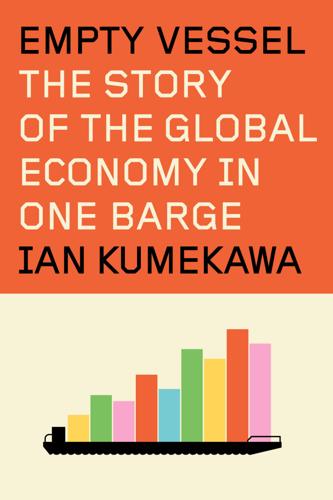
Empty Vessel: The Story of the Global Economy in One Barge
by
Ian Kumekawa
Published 6 May 2025
BACK TO NOTE REFERENCE 31 Committee of Inquiry into Shipping, Report (London: HMSO, 1970) (Cmnd. 4337), 51. BACK TO NOTE REFERENCE 32 The system of flags of convenience, in the journalist William Langewiesche’s words, “constitutes an exact reversal of sovereignty’s intent, and a perfect mockery of national conceits. It is free enterprise at its freest.” William Langewiesche, “Anarchy at Sea,” The Atlantic, September 2003. See also Langewiesche, The Outlaw Sea: A World of Freedom, Chaos, and Crime (New York: North Point Press, 2004), 4–7. BACK TO NOTE REFERENCE 33 See DeSombre, Flagging Standards; Carlos Felipe Llinás Negret, “Pretending to Be Liberian and Panamanian: Flags of Convenience and the Weakening of the Nation State on the High Seas,” Journal of Maritime Law and Commerce 27, no. 1 (January 2016), 1–28.
…
BACK TO NOTE REFERENCE 27 Author’s interview with John Guard, May 19, 2021. BACK TO NOTE REFERENCE 28 Ibid. “Past Sales,” Solution Strategists, www.solutionstrat.com; “Alan: Offshore Supply Ship IMO 7816379,” MarineTraffic.com, www.marinetraffic.com. On Bhangavar, see William Langewiesche, The Outlaw Sea: A World of Freedom, Chaos, and Crime (New York: North Point Press, 2004). BACK TO NOTE REFERENCE 29 Chris Foote, “Breaking Bad: Uncovering the Oil Industry’s Dirty Secret,” March 17, 2020, BBC News. BACK TO NOTE REFERENCE 30 Author’s interview with John Guard, May 19, 2021.

American Ground: Unbuilding the World Trade Center
by
William Langewiesche
Published 1 Jan 2002
LDB William Langewiesche American Ground Traduzione di Roberto Serrai Adelphi eBook TITOLO ORIGINALE: American Ground Quest’opera è protetta dalla legge sul diritto d’autore È vietata ogni duplicazione, anche parziale, non autorizzata In copertina: Il Ground Zero visto dal negozio Brooks Brothers, 13 settembre 2001 Foto di Sean Hemmerle © HEMMERLE/CONTACT/GRAZIA NERI Prima edizione digitale 2016 © 2002 WILLIAM LANGEWIESCHE Published by arrangement with North Point Press, a division of Farrar, Straus and Giroux, LLC, New York © 2003 ADELPHI EDIZIONI S.P.A.
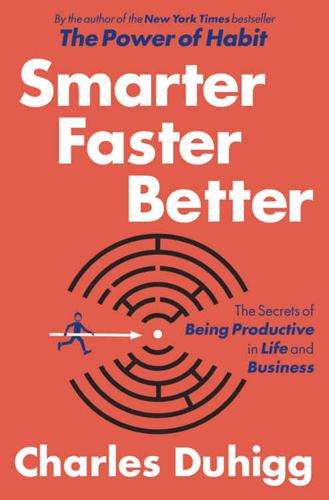
Smarter Faster Better: The Secrets of Being Productive in Life and Business
by
Charles Duhigg
Published 8 Mar 2016
It is worth noting that the original concept for depressing children stories originated with O’Donoghue, not Garrett. CHAPTER THREE: FOCUS bound for Paris For my understanding of the details of Air France Flight 447, I am indebted to numerous experts, including William Langewiesche, Steve Casner, Christopher Wickens, and Mica Endsley. I also drew heavily on a number of publications: William Langewiesche, “The Human Factor,” Vanity Fair, October 2014; Nicola Clark, “Report Cites Cockpit Confusion in Air France Crash,” The New York Times, July 6, 2012; Nicola Clark, “Experts Say Pilots Need More Air Crisis Training,” The New York Times, November 21, 2011; Kim Willsher, “Transcripts Detail the Final Moments of Flight from Rio,” Los Angeles Times, October 16, 2011; Nick Ross and Neil Tweedie, “Air France Flight 447: ‘Damn It, We’re Going to Crash,’ ” The Daily Telegraph, May 1, 2012; “Air France Flight 447: When All Else Fails, You Still Have to Fly the Airplane,” Aviation Safety, March 1, 2011; “Concerns over Recovering AF447 Recorders,” Aviation Week, June 3, 2009; Flight Crew Operating Manual, Airbus 330—Systems—Maintenance System; Tim Vasquez, “Air France Flight 447: A Detailed Meteorological Analysis,” Weather Graphics, June 3, 2009, http://www.weathergraphics.com/tim/af447/; Cooperative Institute for Meteorological Satellite Studies, “Air France Flight #447: Did Weather Play a Role in the Accident?”
…
Thank you, as well, to my stalwart fact checkers—Cole Louison and Benjamin Phalen—and Olivia Boone, who helped format and organize the endnotes. I am indebted to the many people who were generous with their time and knowledge during the reporting of this book. Many are mentioned in the notes, but I wanted to give additional thanks to William Langewiesche, who provided guidance on the mechanics (and writing) of flight, and Ed Catmull and Amy Wallace, who made the Disney chapter happen. Finally, my deepest thanks are to my family: Katy Duhigg, Jacquie Jenkusky, David Duhigg, Dan Duhigg, Toni Martorelli, Alexandra Alter, and Jake Goldstein have been wonderful friends.
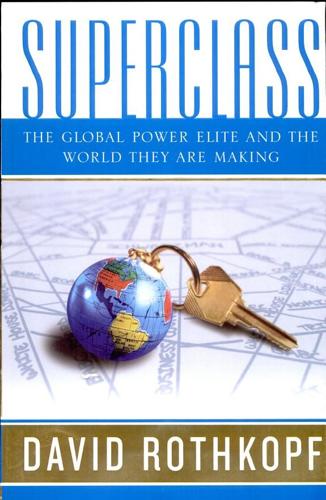
Superclass: The Global Power Elite and the World They Are Making
by
David Rothkopf
Published 18 Mar 2008
BusinessWeek, August 10, 1998. 213 Late in 2006, the Chinese government took this trend Mure Dickie, “Chinese Army Opens Door to Private Weapons Suppliers,” Financial Times, February 2, 2007. 213 China is announcing record military spending Jim Yardley and David Lague, “Beijing Accelerates Its Military Spending,” New York Times, March 5, 2007. 214 According to the highly respected Stockholm International Peace Research Institute SIPRI Yearbook 2007, yearbook2007.sipri.org/. 214 the Defense News top 100 ranking “Defense News Top 100,” www.defensenews.com. 214 SIPRI also has an Arms Transfers Project “The Arms Transfers Project,” www.sipri.org/contents/armstrad/. 216 William Langewiesche’s The Atomic Bazaar William Langewiesche, The Atomic Bazaar: The Rise of the Nuclear Poor (New York: Farrar, Straus and Giroux, 2007). 216 Bill Clinton once characterized nuclear weapons William Clinton, “Remarks at the ECHOSTAR Team Summit 2003,” speech given in Atlanta, Georgia, May 3, 2003. 216 forging his identity as “father of the Islamic bomb” Johanna McGeary, “Inside the A-Bomb Bazaar,” Time, January 12, 2004. 217 President Bush’s 2004 assertion George W.
…
Despite their lack of visibility, these individuals have global impact: Potentially using or supplying weapons of mass destruction, they can alter the fates of nations. Many of the headlines and much of the attention in the arms business are associated with the most expensive or destructive weapons. William Langewiesche’s The Atomic Bazaar, for example, chronicles one of the most destabilizing, power-shifting phenomena in global security: the acquisition by poor countries of nuclear weapons technologies. Langewiesche calls the acquisitors “the nuclear poor” and rightly notes that their possession of such weapons gives these countries and their leaders much greater leverage internationally.

The Uninhabitable Earth: Life After Warming
by
David Wallace-Wells
Published 19 Feb 2019
At four degrees, the deadly European heat wave of 2003, which killed as many as 2,000 people a day, will be a normal summer. Then, it was one of the worst weather events in Continental history, killing 35,000 Europeans, including 14,000 French; perversely, the infirm fared relatively well, William Langewiesche has written, most of them watched over in the nursing homes and hospitals of those well-off countries, and it was the comparatively healthy elderly who accounted for most of the dead, many left behind by vacationing families escaping the heat, with some corpses rotting for weeks before the families returned.
…
The authors write, of the 2015 summer, “The extraordinary heat had deadly consequences, with over 3,400 fatalities reported across India and Pakistan alone.” European heat wave of 2003: World Bank, Turn Down the Heat, p. 37, http://documents.worldbank.org/curated/en/865571468149107611/pdf/NonAsciiFileName0.pdf. worst weather events in Continental history: William Langewiesche, “How Extreme Heat Could Leave Swaths of the Planet Uninhabitable,” Vanity Fair, August 2017. a research team led by Ethan Coffel: Ethan Coffel et al., “Temperature and Humidity Based on Projections of a Rapid Rise in Global Heat Stress Exposure During the 21st Century,” Environmental Research Letters 13 (December 2017), https://doi.org/10.1088/1748-9326/aaa00e.

The Checklist Manifesto: How to Get Things Right
by
Atul Gawande
Published 2 Jan 2009
But he got the distress signals sent, and he made sure the plane was properly configured for an emergency water landing. “Flaps out?” asked Sullenberger. “Got flaps out,” responded Skiles. Sullenberger focused on the glide down to the water. But even in this, he was not on his own. For, as journalist and pilot William Langewiesche noted afterward, the plane’s fly-by-wire control system was designed to assist pilots in accomplishing a perfect glide without demanding unusual skills. It eliminated drift and wobble. It automatically coordinated the rudder with the roll of the wings. It gave Sullenberger a green dot on his screen to target for optimal descent.
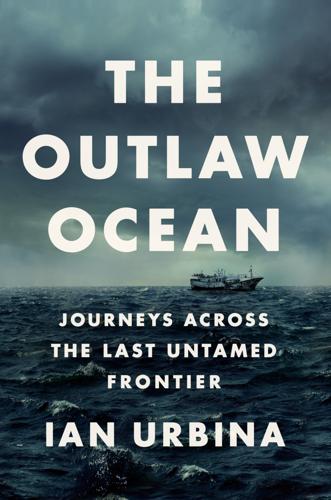
The Outlaw Ocean: Journeys Across the Last Untamed Frontier
by
Ian Urbina
Published 19 Aug 2019
Department of State’s Office to Monitor and Combat Trafficking in Persons, Ann Luskey, the Tiffany & Co. Foundation, Shannon O’Leary Joy, the International Transport Workers’ Federation, the Schmidt Family Foundation, OCEANUSLive, FISH-i Africa, Monterey Bay Aquarium Foundation, Human Rights Watch, and Trygg Mat Tracking. The title of my book is a nod to William Langewiesche’s singularly insightful work, published in 2004, called The Outlaw Sea, about mayhem on the oceans involving merchant and passenger ships in particular. I share with Langewiesche the view that the maritime world exists largely outside the law, and his writing on the topic was for me an invaluable inspiration.
…
, April 18, 2016; “Greenpeace Shuts Pet Food Factory Connected to Slavery and Destructive Fishing,” New Zealand Herald, May 19, 2016; Nick Grono, “Perpetrators of Modern Slavery Are Devastating Our Environment Too,” Guardian, Nov. 17, 2015; Nick Grono, “Traumatized and Vulnerable, Slavery Survivors Live with Mental Health Issues,” CNN, Nov. 5, 2015; Matt Hadro, “If You Buy Shrimp You Might Want to Know This,” Eurasia Review, March 7, 2016; Matt Hadro, “You Should Know This if You Buy Shrimp,” Eurasia Review, Nov. 9, 2016; “Hagens Berman: Class Action Filed Against Nestlé for Slave Labor, Human Trafficking Used to Produce Top-Selling Pet Food,” Business Wire, Aug. 27, 2015; Ruth Halkon, “Fisherman ‘Enslaved for Five Years on Thai Fishing Boat Because of an Unpaid Beer Tab,’ ” Irish Mirror, May 19, 2016; Esther Han, “Prawns Linked with Trafficking and Environmental Damage Revealed,” Age (Melbourne, Australia), Dec. 9, 2015; Kate Hodal, “Slavery and Trafficking Continue in Thai Fishing Industry, Claim Activists,” Guardian, Feb. 24, 2016; Michael Holtz, Stephanie Hanes, and Whitney Eulich, “How to Free Modern Slaves: Three Tech Solutions That Are Working,” Christian Science Monitor, Nov. 23, 2015; Esther Htusan and Margie Mason, “More than 2,000 Enslaved Fishermen Rescued in 6 Months,” Associated Press, Sept. 17, 2015; David Hughes, “Don’t Forget the Seafarers and the Fishermen; For Those at Sea, Work, Together with Its Inherent Risks, Carries On as Usual over the Christmas and New Year Season,” Business Times Singapore, Dec. 23, 2015; Ralph Jennings, “Taiwan Seeks to Improve Conditions in Fishing Fleet,” Associated Press, Oct. 4, 2016; John Kerry, “John Kerry’s Remarks at the Chicago Council on Global Affairs,” Oct. 26, 2016, transcript; Susan Krashinsky, “Clover Leaf Website Will Let Consumers Track the Source of Their Fish,” Globe and Mail, Oct. 3, 2016; William Langewiesche, “Slaves Without Chains,” Vanity Fair, Jan. 2016; Erik Larson, “Lawsuit Aimed at Products Where Forced Labour Used; Lawyers Hope to Push Major Firms to Better Police Their Supply Chains,” National Post’s Financial Post & FP Investing, Dec. 14, 2015; Erik Larson, “Slavery Labels Sought for U.S.
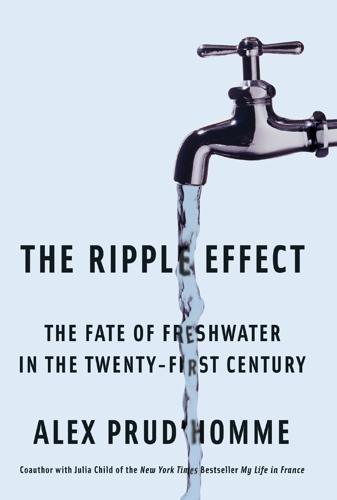
The Ripple Effect: The Fate of Fresh Water in the Twenty-First Century
by
Alex Prud'Homme
Published 6 Jun 2011
Revkin, “Dredging of Pollutants Begins in Hudson,” New York Times, May 15, 2009. 39 Laurence Tribe: Gargill, “General Electric Superfraud.” 39 In May 2009, a dredge: Revkin, “Dredging of Pollutants Begins in Hudson.” 39 the company is wholly or partially responsible: Gargill, “General Electric Superfraud.” 39 Cleanup of the Housatonic has gone more slowly: Gray interview and HRI; DePalma, “GE Moves Ahead.” 40 Instead, activists propose a ten-point plan: Gray interview. HRI: “Ten Principles for a Better River Cleanup,” blog post, February 4, 2009. 41 Anaconda Copper Mining Company: William Langewiesche, “The Profits of Doom,” Atlantic, April 2001. 41 342 snow geese: Duncan Adams, “Did Toxic Stew Cook the Goose?” High Country News, December 11, 1995. 41 Since 1998, BP-ARCO and regulators: Justin Post, “Waterfowl land in pit, die,” Montana Standard, November 30, 2007. See also PITWATCH: http://www.pitwatch.org/2004.htm. 41 Donald Peoples: Langewiesche, “Profits of Doom.”
…
See also Arizona Department of Water Resources: http://www.azwater.gov/azdwr/default.aspx. 326 In 1993, fighting a flash flood on the Gila River: Guenther interview. 326 some 2.7 million acre-feet: Arizona Department of Water Resources. 326 the Central Arizona Project: http://www.cap-az.com/. 326 Salt River Project: https://www.srpnet.com/Default.aspx. 326 groundwater beneath Phoenix: Shaun McKinnon, “Unabated use of groundwater threatens Arizona’s future,” Arizona Republic, August 2, 2009. 327 In 2008, Arizona used about 8 million acre-feet: http://www.cap-az.com/operations/recharge/recharge-in-arizona/water-sources/. 327 outdoor misting systems: As explained to the author by Jack Lavelle, Arizona Department of Water Resources public information officer. 327 The state doesn’t know how much groundwater it has: McKinnon, “Unabated use of groundwater threatens Arizona’s future.” 327 it could face a water crisis by 2025: “Our Water, Our Future: Policy Options to Safeguard Water Resources in Arizona,” Arizona Public Interest Research Group: http://www.arizonapirg.org/home/reports/report-archives/ our-water-our-future/our-water-our-future/our-water -our-future-policy-options-to-safeguard -water-resources-in-arizona. 328 James Pollard Espy: Richard P. Horwitz, “Americans’ Problem with Global Warming,” American Studies, vol. 45:1 (Spring 2004). 328 Vincent Schaefer and Irving Langmuir: William Langewiesche, “Stealing Weather,” Vanity Fair, May 2008. 328 Bernard Vonnegut: Ibid. 329 silver iodide into a cloud can increase: Joshua Zaffos, “Snow Job,” Colorado Springs Independent, February 16, 2006. 329 Xinjiang region of China: Langewiesche, “Stealing Weather.” 329 clouds were seeded over China: “China overdoes cloud seeding to end drought … and blankets Beijing in snow,” Daily Mail, November 2, 2009; and Quentin Sommerville, “Scientists ‘cause’ Beijing snow,” BBC News, November 2, 2009. 329 In the 1970s, the federal government: Kavan Peterson, “Cloud seedings silver lining hard to prove,” Stateline, January 5, 2005. 329 “There is still no convincing scientific proof”: Dr.

Homeland: The War on Terror in American Life
by
Richard Beck
Published 2 Sep 2024
Similarly, no criticism of the firefighters’ behavior on September 11 could be mild or qualified enough to merit anything less than an overwhelming rebuttal. Too much depended, psychologically, on the story of the firefighters’ heroism to allow anyone to chisel away at it. In the second half of 2002, William Langewiesche, an award-winning journalist at The Atlantic Monthly, published a series of articles based on months spent reporting from the Ground Zero cleanup site. Though he did not engage in the same kind of hagiography that characterized much of the media’s coverage of New York’s emergency workers, it was a wholly admiring portrait of their courage, ingenuity, and determination to help put the city back on its feet.
…
BACK TO NOTE REFERENCE 24 Kevin Flynn, “60 Firefighters Who Died on Sept. 11 Were Off Duty,” New York Times, Jan. 27, 2002, www.nytimes.com/2002/01/27/nyregion/60-firefighters-who-died-on-sept-11-were-off-duty.html. BACK TO NOTE REFERENCE 25 “Common Valor,” Wall Street Journal, Sept. 14, 2001, www.wsj.com/articles/SB1000432905762754757. BACK TO NOTE REFERENCE 26 William Langewiesche, American Ground: Unbuilding the World Trade Center (New York: North Point Press, 2002), 160–61. BACK TO NOTE REFERENCE 27 David Carr, “Rebutting a Claim of Tarnished Valor; Research Challenges Account of 9/11 Looting by Firefighters,” New York Times, March 23, 2003, www.nytimes.com/2003/03/23/nyregion/rebutting-claim-tarnished-valor-research-challenges-account-9-11-looting.html.
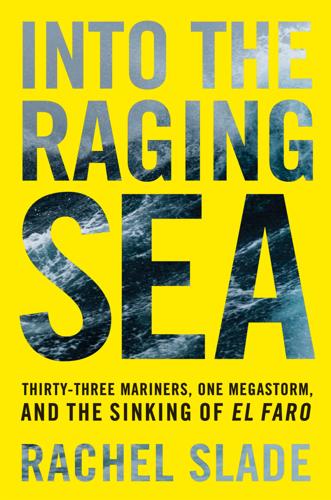
Into the Raging Sea
by
Rachel Slade
Published 4 Apr 2018
The shift is due to simple economics: it’s cheaper to register ships in countries that have looser regulations, like Liberia and Panama. Plenty of American-owned ships fly foreign flags to get around Jones Act requirements. This flight among shippers from America’s registers, called “flags of convenience,” is an invitation to anarchy, argues William Langewiesche in the Outlaw Sea. By registering a ship elsewhere, shipowners can avoid US taxes, labor laws, domestic construction requirements, and anything else that cuts into profitability. And oftentimes ships are registered to landlocked nations, which underscores the free-for-all nature of this system and the Wild West nature of the sea.
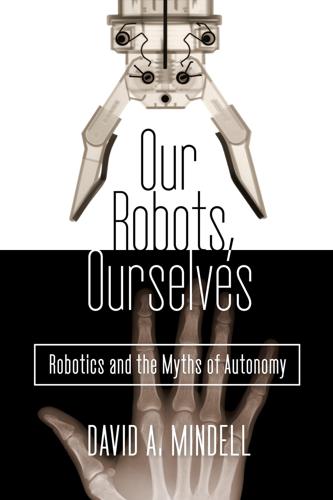
Our Robots, Ourselves: Robotics and the Myths of Autonomy
by
David A. Mindell
Published 12 Oct 2015
Australian Transport Safety Bureau, “In-flight Unconfined Engine Failure Overhead Batam Island, Indonesia, 4 November 2010, VH-OQA, Airbus A380–842,” ATSB Transport Safety Report, Aviation Safety Occurrence Investigation—AO-2010-089 Final 27 June, 2013. “syntax, sequence, and procedure”: Robert Moreau, personal communication with author, December 2014. what happened on Air France 447: For a journalistic summary of the accident, see William Langewiesche, “The Human Factor,” Vanity Fair, October 2014. summarized the results this way: J. K. Lauber quoted in Nadine Sarter et al., Cognitive Engineering in the Aviation Domain, 1st edition (CRC, 2000), 275–76. a joint industry-FAA working group: PARC/CAST Flight Deck Automation Working Group, “Operational Use of Flight Path Management Systems,” Federal Aviation Administration, September 5, 2013.
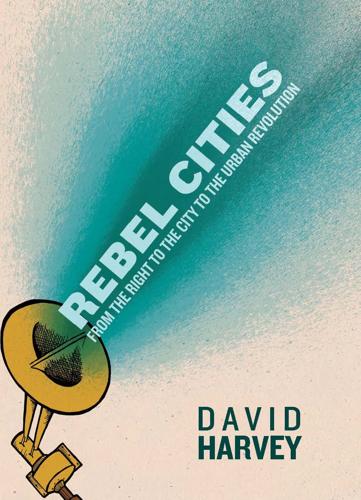
Rebel Cities: From the Right to the City to the Urban Revolution
by
David Harvey
Published 3 Apr 2012
For a general expansion of this argument, see Harvey, The Lim its to Capital: Chapter 1 2; and David Harvey, The Condition of Postmodernity, Part 3; and for a specific application of the concept see William Cronon, Nature's Metropolis, New York: Norton, 1 99 1 . 1 0. Tahbilk Wine Club, Wine Clu b Circular 1 5 (June 2000), Tahbilk Winery and Vineyard, Tahbilk, Victoria, Australia. 1 1 . William Langewiesche, "The Million Dollar Nose;' A tlan tic Monthly 286: 6 (December 2000): 1 1 -22. 1 2. Bob Jessop, "An Entrepreneurial City in Action: Hong Kong's Emerging Strategies in Preparation for ( Inter-) Urban Competition;' Urban Studies 37: 1 2 (2000): 2,287-3 1 3; David Harvey, "From Managerialism to Entrepreneurialism: The Transformation of Urban Governance in Late Capitalism;' Geografiska A nnaler 7 1 B ( 1 989): 3- 1 7; Neil Bren ner, Spaces of Neoliberalism: Urban Restucturing in North A merica and Western Europe, Oxford: Wiley-Blackwell, 2003. 1 3.

Prediction Machines: The Simple Economics of Artificial Intelligence
by
Ajay Agrawal
,
Joshua Gans
and
Avi Goldfarb
Published 16 Apr 2018
The bet is possible because of technological advances in privacy-protecting data analysis, especially Cynthia Dwork’s invention of differential privacy: Cynthia Dwork, “Differential Privacy: A Survey of Results,” in M. Agrawal, D. Du, Z. Duan, and A. Li (eds), Theory and Applications of Models of Computation. TAMC 2008. Lecture Notes in Computer Science, vol 4978 (Berlin: Springer, 2008), https://doi.org/10.1007/978-3-540-79228-4_1. 14. William Langewiesche, “The Human Factor,” Vanity Fair, October 2014, http://www.vanityfair.com/news/business/2014/10/air-france-flight-447-crash. 15. Tim Harford, “How Computers Are Setting Us Up for Disaster,” The Guardian, October 11, 2016, https://www.theguardian.com/technology/2016/oct/11/crash-how-computers-are-setting-us-up-disaster.

Reinventing Capitalism in the Age of Big Data
by
Viktor Mayer-Schönberger
and
Thomas Ramge
Published 27 Feb 2018
CHAPTER 8: FEEDBACK EFFECTS built-in risk of extreme failure: See the official report of the accident investigation BEA, Final Report—On the Accident on 1st June 2009 to the Airbus A330-203 Registered F-GZCP Operated by Air France Flight AF 447 Rio de Janeiro–Paris, July 2012, https://www.bea.aero/docspa/2009/f-cp090601.en/pdf/f-cp090601.en.pdf; see also William Langewiesche, “The Human Factor,” Vanity Fair, September 17, 2014, http://www.vanityfair.com/news/business/2014/10/air-france-flight-447-crash; Tim Harford, “Crash: How Computers Are Setting Us Up for Disaster,” Guardian, October 11, 2016, https://www.theguardian.com/technology/2016/oct/11/crash-how-computers-are-setting-us-up-disaster.

Hello World: Being Human in the Age of Algorithms
by
Hannah Fry
Published 17 Sep 2018
All quotes from Jack Stilgoe are from private conversation. 39. Jeff Sabatini, ‘The one simple reason nobody is talking realistically about driverless cars’, Car and Driver, Oct. 2017, https://www.caranddriver.com/features/the-one-reason-nobody-is-talking-realistically-about-driverless-cars-feature. 40. William Langewiesche, ‘The human factor’, Vanity Fair, 17 Sept. 2014, https://www.vanityfair.com/news/business/2014/10/air-france-flight-447-crash. 41. Bureau d’Enquêtes et d’Analyses pour la Sécuritié de l’Aviation Civile, Final Report on the Accident on 1st June 2009 to the Airbus A330-203 registered F-GZCP operated by Air France Flight AF447 Rio de Janeiro – Paris, Eng. edn (Paris, updated July 2012), https://www.bea.aero/docspa/2009/f-cp090601.en/pdf/f-cp090601.en.pdf. 42.

Whole Earth Discipline: An Ecopragmatist Manifesto
by
Stewart Brand
Published 15 Mar 2009
It is a large, highly disciplined group run from inside Brazil’s prisons via cellphones, capable of massive swarming attack. In May 2006 and again in July, the PCC paralyzed the entire city of São Paulo with a series of coordinated violent attacks. Why? Just to prove they could, apparently. William Langewiesche, writing in Vanity Fair, saw the PCC as part of a much larger phenomenon, which he called the “feral zone”:That zone is a wilderness inhabited already by large populations worldwide, but officially denied and rarely described. It is not a throwback to the Dark Ages, but an evolution toward something new—a companion to globalization, and an element in a fundamental reordering that may gradually render national boundaries obsolete.

Visual Thinking: The Hidden Gifts of People Who Think in Pictures, Patterns, and Abstractions
by
Temple Grandin, Ph.d.
Published 11 Oct 2022
The engineers assumed that the pilots would know how to disable the computer system by taking manual control of the horizontal stabilizer. Pilots are trained to manually command the horizontal fin on the plane’s tail when an electrical malfunction causes the stabilizer to move on its own, a problem known as runaway trim. William Langewiesche, in a New York Times Magazine story about the Boeing crash, contends that “these pilots couldn’t decipher a variant of a simple runaway trim . . . leading their passengers over an aerodynamic edge into oblivion.” The problem was Boeing’s flawed software system, which repeatedly and aggressively forced the nose of the plane down.
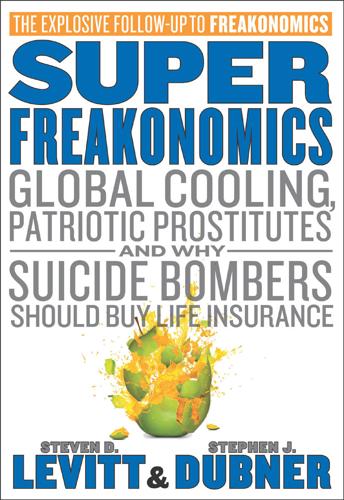
SuperFreakonomics
by
Steven D. Levitt
and
Stephen J. Dubner
Published 19 Oct 2009
. / 189 “Year Without a Summer”: see Robert Evans, “Blast from the Past,” Smithsonian, July 2002. / 189 Lake Toba super volcano: see Stanley H. Ambrose, “Late Pleistocene Human Population Bottlenecks, Volcanic Winter, and Differentiation of Modern Humans,” Journal of Human Evolution 34, no. 6 (1998). / 191 The Vonnegut brothers make rain: see William Langewiesche, “Stealing Weather,” Vanity Fair, May 2008. / 191 The idea was attributed to…Mikhail Budyko: see M. I. Budyko, “Climatic Changes,” American Geophysical Society, Washington, D.C., 1977. Improbably, Ken Caldeira did postdoctoral work at Budyko’s institute in Leningrad and met his future wife there. / 196–197 Perhaps the stoutest scientific argument: see Paul J.
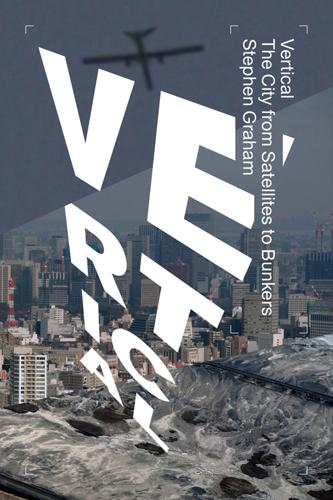
Vertical: The City From Satellites to Bunkers
by
Stephen Graham
Published 8 Nov 2016
Among the material sifted and deposit, were ‘4,100 body parts, 1,350 crushed vehicles, clumps of human hair, the engine from one of the hijacked planes, dozens of Gap bags and Fossil wristwatches … Blue Cross/Blue Shield insurance cards … diamond engagement rings … sets of keys … baseball memorabilia.’64 The Fresh Kills site thus bears painful witness to the devastating destruction of the two symbolic vertical towers after the 9/11 attacks. From across the harbour, Vanity Fair journalist William Langewiesche observed the barges carrying the Twin Towers debris gliding from the tip of Manhattan to be unloaded at Fresh Kills. ‘The hilltop was of course part of America’, he reflected. ‘And by geographic measures it was not far removed from Manhattan: on a clear day from there you could even count the monuments of the [New York] skyline, minus two.
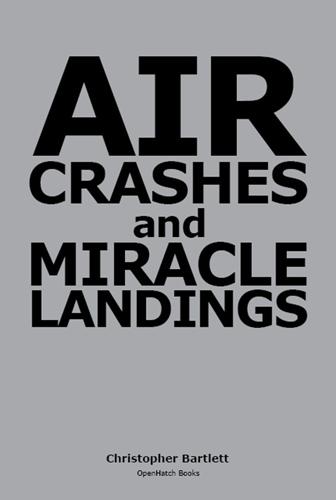
Air Crashes and Miracle Landings: 60 Narratives
by
Christopher Bartlett
Published 11 Apr 2010
Had the FAA made the installation of fire-detectors and fire-suppressant systems mandatory for such D-Class cargo holds, the pilots might well have been able to bring the aircraft back before things got out of hand. An interesting point was that the maintenance workers doing 12-hour shifts were concerned about the safety aspect, but their focus was on the safety of the MD-80s they were working on! William Langewiesch has covered this organizational accident in detail in the March 1998 edition of the Atlantic Monthly, referring to the work on the prevention of such accidents carried out by academics. Incidentally, he adds that some academics claim the extra safety features incorporated into systems, in themselves, can lead to accidents as in the Chernobyl case, and here in the ValuJet case.
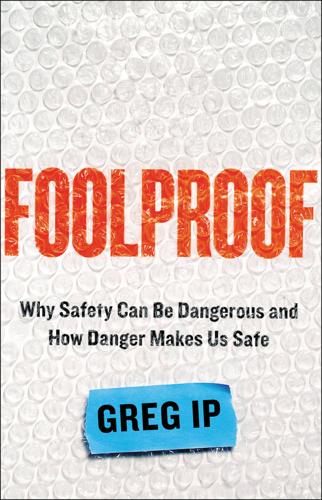
Foolproof: Why Safety Can Be Dangerous and How Danger Makes Us Safe
by
Greg Ip
Published 12 Oct 2015
Comparisons between commercial aviation and automobile fatalities are based on fatalities per 100 million miles traveled, three-year averages. The data are from the Bureau of Transportation Statistics, U.S. Department of Transportation. 33 Fly-by-wire, as this became known: A great history of the technology is by William Langewiesche, Fly by Wire (New York: Picador, 2009). 34 Shortly after the autopilot: Details of the events leading up to the crash of Air France Flight 447 are from Bureau d’Enquêtes et d’Analyses pour la sécurité de l’aviation Civile, “Final Report on the accident on 1st June 2009 to the Airbus A330-203 registered F-GZCP operated by Air France flight AF 447 Rio de Janeiro–Paris,” 2012, 173. 35 pilots had never trained: Ibid., 204. 36 he may have ignored the stall warning: Ibid., 180.
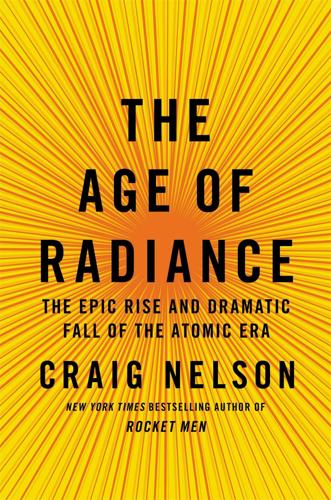
The Age of Radiance: The Epic Rise and Dramatic Fall of the Atomic Era
by
Craig Nelson
Published 25 Mar 2014
At seventeen thousand spots the water mains cracked apart, leaving firemen helpless against the hurricane of conflagration. There were 150 doctors, but most were dead or injured, and 1,780 nurses, but 1,654 of these were either dead or injured. Then the fire in the sky of ten suns was replaced by an ever-growing darkness, as dust thrown up by the blast combined with smoke from the hurricane of fire. Journalist William Langewiesche: “There is a moment of calm. The fireball is no longer visible, but it is still extremely hot, and it is vigorously rising into the atmosphere. [From this] displacement of air, a result of its rise, the winds now reverse and begin to flow back towards the epicenter at speeds up to 200 miles an hour, ripping apart damaged structures that somehow so far remained standing.
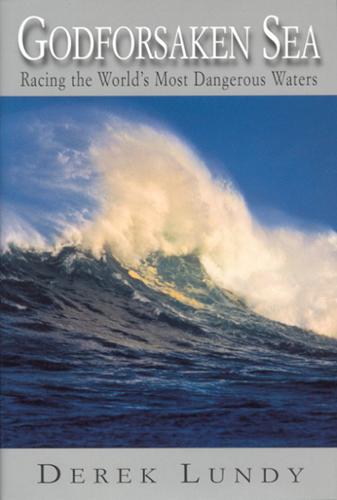
Godforsaken Sea
by
Derek Lundy
Published 15 Feb 1998
In a preview of long-distance sailing, French pilots dominated the early long-distance flying competitions as well. The special significance in France of single-handed racing through the Southern Ocean has a kind of Saint-Exupéry–Moitessier lineage. In Sahara Unveiled, his book about crossing the Sahara, the American William Langewiesche writes about the French love affair with the barren and apparently limitless desert. They fought to control its emptiness for more than a century. He thinks it may have been, in part, the natural antidote to the particular regulated and “de-natured” part of Europe in which they were confined.
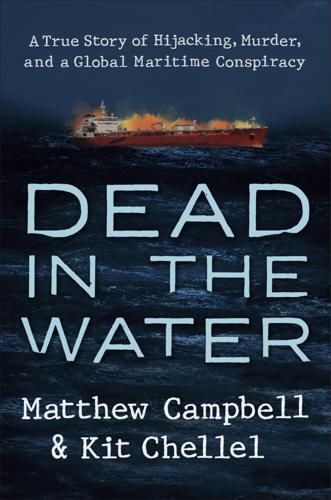
Dead in the Water: A True Story of Hijacking, Murder, and a Global Maritime Conspiracy
by
Matthew Campbell
and
Kit Chellel
Published 2 May 2022
GO TO NOTE REFERENCE IN TEXT It’s standard practice: Ioannis Theotokas and Gelina Harlaftis, Leadership in World Shipping: Greek Family Firms in International Business (London: Palgrave Macmillan UK, 2009), 29. GO TO NOTE REFERENCE IN TEXT This lack of transparency: Guillaume Vuillemey, Evading Corporate Responsibilities: Evidence from the Shipping Industry (Paris: HEC Paris, 2020), 4. GO TO NOTE REFERENCE IN TEXT As one chronicler put it: William Langewiesche, “Anarchy at Sea,” The Atlantic, Sept. 2003, https://www.theatlantic.com/magazine/archive/2003/09/anarchy-at-sea/376873/. GO TO NOTE REFERENCE IN TEXT The story was picked up: Michelle Wiese Bockmann and Alaric Nightingale, “Million-Barrel Tanker on Fire Off Yemen After Grenade Attack,” Bloomberg News, Jul. 6, 2011.
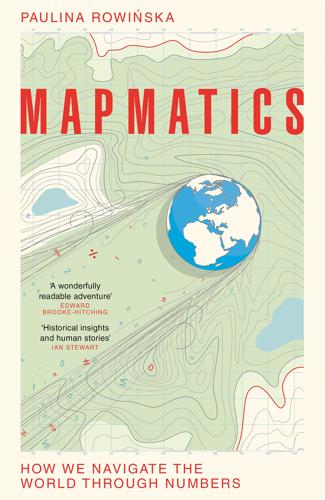
Mapmatics: How We Navigate the World Through Numbers
by
Paulina Rowinska
Published 5 Jun 2024
which describes motion in water: Stone, ‘In Search of Air France Flight 447’. determining the causes of the crash: Lawrence D. Stone et al., ‘Search for the Wreckage of Air France Flight AF 447’, Statistical Science 29, no. 1 (February 2014): 69–80, https://doi.org/10.1214/13-sts420. plunge into the water at a breathtaking speed: William Langewiesche, ‘The Human Factor’, Vanity Fair, 17 September 2014. controlling the plane by hand: Angelique Chrisafis, ‘Final Minutes of Air France Flight AF447 to Be Examined as Trial Opens’, The Guardian, 10 October 2022. 8. Deep the surface of Mars: Daniel O’Donohue, ‘Mapping the Ocean Floor’, Mapscaping podcasts, 21 January 2021, https://mapscaping.com/podcast/mapping-the-ocean-floor/.
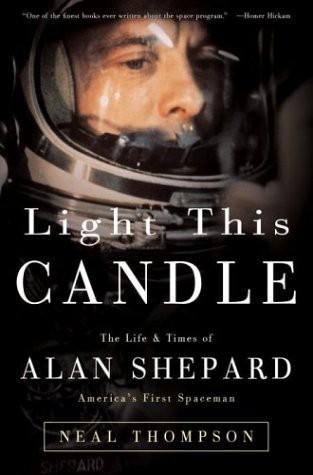
Light This Candle: The Life & Times of Alan Shepard--America's First Spaceman
by
Neal Thompson
Published 2 Jan 2004
page 92, Going “to the lakes”: An Oral History of the Corpus Christi Naval Air Station. page 93, “Barran . . . you fly like shit”: Author interview with Jack Barran. page 93, “IN THE WRONG DIRECTION”: Shepard’s flight training records. page 94, “UNSAFE FOR SOLO”: Ibid. page 94, “If you are looking for perfect safety . . .”: William Langewiesche, Inside the Sky: A Meditation on Flight (New York: Vintage Books, 1999), p. 14. page 95, hemorrhaging of grease monkeys: Author interview with Tazewell Shepard; Faludi, Stiffed. page 96, Then it was Renza’s turn: Smaus and Spangler, America’s First Spaceman,p. 109. page 96, “You goofed off a little bit”: Allen, Yankee.

A Demon of Our Own Design: Markets, Hedge Funds, and the Perils of Financial Innovation
by
Richard Bookstaber
Published 5 Apr 2007
Government Printing Office (October 1979). The engineering and safety issues are presented in Daniel Ford, Three Mile Island (New York: Penguin Books, 1982). The most complete source for the ValueJet accident is National Transportation Safety Board Aircraft Accident Report 97/06 DCA96MA054. “The Lessons of ValuJet 592” by William Langewiesche in the March 1998 Atlantic Monthly relates this accident as an example of a systemrelated normal accident. 3. With Three Mile Island, for example, there was no consensus on whether the reaction of zirconium and water under conditions of extreme heat would lead to the creation of potentially explosive hydrogen within the containment facility.

Brazillionaires: The Godfathers of Modern Brazil
by
Alex Cuadros
Published 1 Jun 2016
Video for the website of CartaCapital magazine, October 2014. 17once or twice a year. Since that time, Forbes has added a daily ranking to its website. 18one in seven Miami home purchases. “Profile of International Home Buyers in Florida 2012,” National Association of Realtors, August 2012. 19took São Paulo hostage. Details on the PCC takeover are from William Langewiesche, “City of Fear,” Vanity Fair, April 2007. 20one morning in 1989. Abilio narrated his kidnapping to Playboy’s Brazilian edition, February 1990. When the kidnappers were arrested, police paraded them before the press in Workers Party shirts. This was later believed to be an effort to influence the upcoming presidential election in which Lula was running against Fernando Collor. 20they were beaten.

Army of None: Autonomous Weapons and the Future of War
by
Paul Scharre
Published 23 Apr 2018
Newman, “Learning from a Learning Thermostat: Lessons for Intelligent Systems for the Home,” UbiComp’13, September 8–12, 2013. 158 “As systems get increasingly complex”: John Borrie, interview, April 12, 2016. 159 Air France Flight 447: “Final Report: On the accidents of 1st June 2009 to the Airbus A330-203 registered F-GZCP operated by Air France flight 447 Rio de Janeiro—Paris,” Bureau d’Enquêtes et d’Analyses pour la sécurité de l’aviation civile, [English translation], 2012, http://www.bea.aero/docspa/2009/f-cp090601.en/pdf/f-cp090601.en.pdf. William Langewiesche, “The Human Factor,” Vanity Fair, October 2014, http://www.vanityfair.com/news/business/2014/10/air-france-flight-447-crash. Nick Ross and Neil Tweedie, “Air France Flight 447: ‘Damn it, We’re Going to Crash,’” The Telegraph, April 28, 2012, http://www.telegraph.co.uk/technology/9231855/Air-France-Flight-447-Damn-it-were-going-to-crash.html. 159 Normal accident theory sheds light: In fact, Army researchers specifically cited the Three Mile Island incident as having much in common with the Patriot fratricides.

The Quest: Energy, Security, and the Remaking of the Modern World
by
Daniel Yergin
Published 14 May 2011
,” IHS CERA, 2011. 6 Massachusetts Institute of Technology, The Future of Coal: Options for a Carbon-Constrained World, 2007, p. x. 7 MIT, The Future of Coal, pp. ix, 15, 43. 8 John Deutch, The Crisis in Energy Policy: The Godkin Lecture (Cambridge: Harvard University Press, 2011), ch. 3; IHS CERA, Fueling North America’s Energy Future: The Unconventional Natural Gas Revolution and the Carbon Agenda, 2010, pp. vii–2. 9 Interview with Shirley Jackson. 10 United States Nuclear Regulatory Commission, “Reactor License Renewal,” February 16, 2011, at http://www.nrc.gov/reactors/operating/licensing/renewal.html. 11 Carol Browner, CNBC interview, February 16, 2010. 12 Gregory Jaczko, “A View from the Nuclear Regulatory Commission,” speech, March 1, 2010. 13 IHS CERA unpublished paper, “Small Nuclear Reactors—The Promise and the Reality.” 14 Douglas Frantz and Catherine Collins, Fallout: The True Story of the CIA’s Secret War on Nuclear Trafficking (New York: Free Press, 2011), pp. 82–86; Robert G. Joseph, Countering WMD: The Libyan Experience (Fairfax, VA: National Institute Press, 2009), ch. 1. 15 William Langewiesche, The Atomic Bazaar: The Rise of the Nuclear Poor (New York: Farrar, Straus and Giroux, 2007), p. 173. 16 World Nuclear Association, “Reactor Database.” 17 Reuters, December 27, 2009. 18 Interview. 19 World Nuclear News, June 10, 2008 (“absolutely wrong”); Reuters, November 10, 2010. 20 European Nuclear Society, “Nuclear Power Plants, Worldwide,” at http://www.euronuclear.org/info/encyclopedia/n/nuclear-power-plant-world-wide.htm. 21 World Nuclear News, January 8, 2011 (“insufficient”); New York Times, March 21, 2011 (“changed everything”); Reuters, April 15, 2011 (“exit”). 22 Dallas Morning News, April 19, 2011 (“month after month”). 23 John Rowe, speech, CERAWeek, March 2011.

The Profiteers
by
Sally Denton
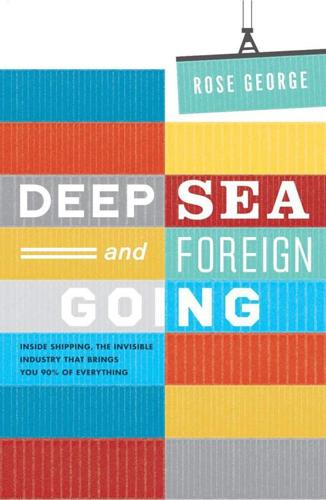
Deep Sea and Foreign Going
by
Rose George
Published 4 Sep 2013

The Elements of Choice: Why the Way We Decide Matters
by
Eric J. Johnson
Published 12 Oct 2021
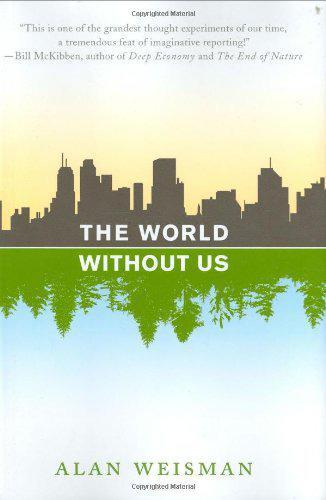
The World Without Us
by
Alan Weisman
Published 5 Aug 2008

Into the Black: The Extraordinary Untold Story of the First Flight of the Space Shuttle Columbia and the Astronauts Who Flew Her
by
Rowland White
and
Richard Truly
Published 18 Apr 2016

Command and Control: Nuclear Weapons, the Damascus Accident, and the Illusion ofSafety
by
Eric Schlosser
Published 16 Sep 2013